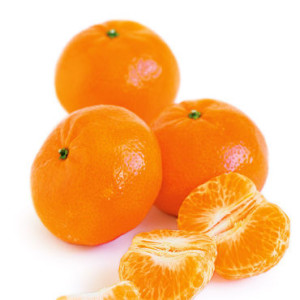 Print this Article
Print this Article

Reviewed by Rabbi Moshe Pinhasi
Eretz Yisrael was blessed with beautiful fruits, some of which make their way to our shores from time to time. While the average Israeli consumer is accustomed to take into account issues of Shemita (the seventh year) and Terumot and Ma’asrot (tithing and separating the required portions from fruits growing in Eretz Yisrael), the American consumer may be stumped when he discovers that the fruits he has bought at an unsuspecting supermarket, are indeed a product of Israel (and were not under reliable rabbinic supervision).
Over the past few months, Costco has been selling Israeli clementines, which led to quite a confusion amongst the customers who suddenly realized their fruits may be subject to the laws of Shemita, Terumot and Ma’asrot.
Tithing this Year’s Fruits
In theory, fruit which grew or blossomed during a Shemita year is exempt from Teruma and Ma’aser because Shemita fruits are Hefker (ownerless). According to the OU, most Israeli fruit currently available in the market (Spring – Summer 2016) blossomed during the Shemita year, and separating Teruma and Ma’aser should be unnecessary. However, in practice, Teruma and Ma’aser must be separated, if the fruit is not properly certified, for the following reason.
The Chief Rabbinate of Israel sells the farms in Israel to non-Jews to avoid the Shemitah obligation. This is known as the “Heter Mechira”. For over 150 years, a strong debate has been waged among the Poskim about the propriety and efficacy of selling farmland to non-Jews [a full discussion of this topic is beyond the scope of this article[1]].
If the Mechira is valid, then the fruit does not have a Shemita status, and Teruma and Ma’aser must then be separated. If the Mechira is invalid, separating Teruma and Ma’aser is not required. Nonetheless, in practice, the Minhat Shelomo[2] recommends that everyone should separate Teruma and Ma’aser. This is because even those who do not rely on the Mechira as a leniency, nevertheless treat it as an uncertainty.
Costco’s Clementines
Accordingly, if one relies on the Heter Mechira, the clementines offered at Costco do not have a Shemita status and they can be eaten after separation of Teruma and Ma’aser.
If one does not rely on the Heter Mechira, there are possible concerns associated with buying fruit with Shemita status. Since the fruit was grown in Israel on the seventh year, it has Kedushat Shevi’it (the sanctity of Shemita), and therefore should not be purchased with cash (but may be purchased by credit card).[3] The fruit may not be wasted, and any leftovers, including the peel, must preferably be collected and placed in a safe place until it rots.[4] The fruit must be eaten in the normal manner (for example, since it is normal to eat clementines raw, they may not be cooked.)
Biur Shevi’it
Another important requirement that applies to fruits that have Kedushat Shevi’it is the Mitzva of “Bi’ur”, which must be done at the end of the harvest season for each variety of fruit. According to the Ohr L’Tziyon, in order to fulfill this Mitzva, one must physically remove any remaining fruit of that variety from one’s possession (by means of burning and the like). Hacham Ovadia Yosef זצ”ל rules that it also suffices to publicly declare it owner-less in front of three people, after which one may reacquire the fruit. [5] If Bi’ur was not done on the appropriate date, the fruit becomes forbidden to eat. Therefore, it is important to know the date for Bi’ur for each specific fruit. For example, the date of Bi’ur for clementines is May 23rd, 2016 (the fifteenth of Iyar 5776) and for lemons and oranges is July 7th, 2016 (the first of Tamuz 5776).
Please note that Israeli clementines, for those who do not rely on Heter Mechira, should not be bought after this date. In all cases, one who purchases produce from Israel without certification should separate Teruma and Ma’aser.
Sources:
[1] נחלקו בזה גדולי הפוסקים לפני מאה וחמישים שנה, ומאז ועד עתה רבו הדעות והתנאים בדין זה, ואף בדורינו אנו נחלקו בזה גדולי הפוסקים: מרן הראשל”צ הגרע”י זצ”ל העלה שיש תוקף לסמוך על ההיתר מכירה (עי’ בשו”ת יבי”א ח”י יו”ד סי’ לז – מג), ולעומתו הגרב”צ אבא שאול זצ”ל (עי’ במבוא לשו”ת אול”צ הל’ שביעית), ואף מרן הראשל”צ הגרע”י זצ”ל כ’ להודיע בראש חוצות (עי’ בשו”ת יבי”א שם בסוף חלק יו”ד, ובראש ס’ בילקוט יוסף הל’ מצוות התלויות בארץ ח”א) שהן אמת שיש למקילים לסמוך על ההיתר מכירה בשנת השמיטה, מ”מ כל החרד לדבר ה’ ראוי מאוד להחמיר ולקנות פירוש שאין בהם חשש כלל.
[2] ח”א סי’ מד
[3] אע”פ ששטרות כסף המצויים כיום אין להם ערך עצמי ודומים יותר לשטר חוב שאין פודים בו ולא מחללים עליו, כמבואר בקידושין (נח.), מ”מ כ’ הפוסקים (אול”צ שם פ”ג ס”א, ועוד) שהעיקר כדברי הפוסקים [שו”ת חת”ס (יו”ד סי’ קלד) חזו”א (יו”ד סי’ עב סק”י)] שכיון שגזירת המדינה היא שיהיו שטרות אלו עוברים לסוחר כמטבעות, דינם כמטבע שאפשר לחלל עליו, ולפיכך אם נותן שטרות עבור פירות שביעית חלה קדושת שביעית על השטרות.
[4] מעיקר הדין היה אפשר לזרוק את השאריות והקליפות שראויות למאכל אדם או בהמה לפח אשפה רגיל, ובלבד שלא יניחם שם דרך בזיון, אלא יעטפם בניילון או נייר וישליכם לאשפה, דאף שאסור להפסיד פירות שביעית בידים כמו שפסק הרמב”ם (פ”ה משמיטה), מ”מ כ’ הפוסקים [מהרי”ט (ח”א סי’ פג) חזו”א (סי’ יד סק”י) אול”צ שביעית פ”ב ס”ג) ועוד] שמותר לגרום הפסד לפירות שביעית, אמנם רבים [עי’ שמיטה כהלכתה (פ”ג ס”ג עמ’ מח) ילקו”י (שם פט”ו הע’ י), ועוד] כבר נהגו להחמיר ולייחד פח אשפה מיוחד לשאריות מפירות שביעית, מפני שהם קודש ואין לזלזל בהם וימתין עד שירקבו בפח זה, ושוב יוכל להשליכם לפח האשפה.
[5] פסק הגרע”י שעיקר הביעור הוא הפקר הובא בשו”ת יבי”א (ח”ט או”ח סי’ קח אות ח), ובספרו מאור ישראל עמ”ס פסחים (דף נב:), ופסק הגרב”צ הובא באול”צ הל’ שביעית (פ”ג ס”ד).